
This article was originally published on August 23, 2022 on The Restless Viking website.
Gay Sands Beach along Lake Superior on the Keweenaw peninsula is beautiful, but looks can be deceiving. This “sand” is actually a superfund site containing copper mixed with arsenic, silver and nickel from decades of dumping mining waste. For more than a century 50 billion pounds of crushed ore had been deposited along the shore. It had once stretched a half mile into the lake. Now these metal-rich sands are starting to erode to the south which endangers the Buffalo Reef. This reef is where whitefish and lake trout spawn. Join us as we drive along the area experiencing the extent of this disaster hidden in the pristine-looking Lake Superior shoreline.
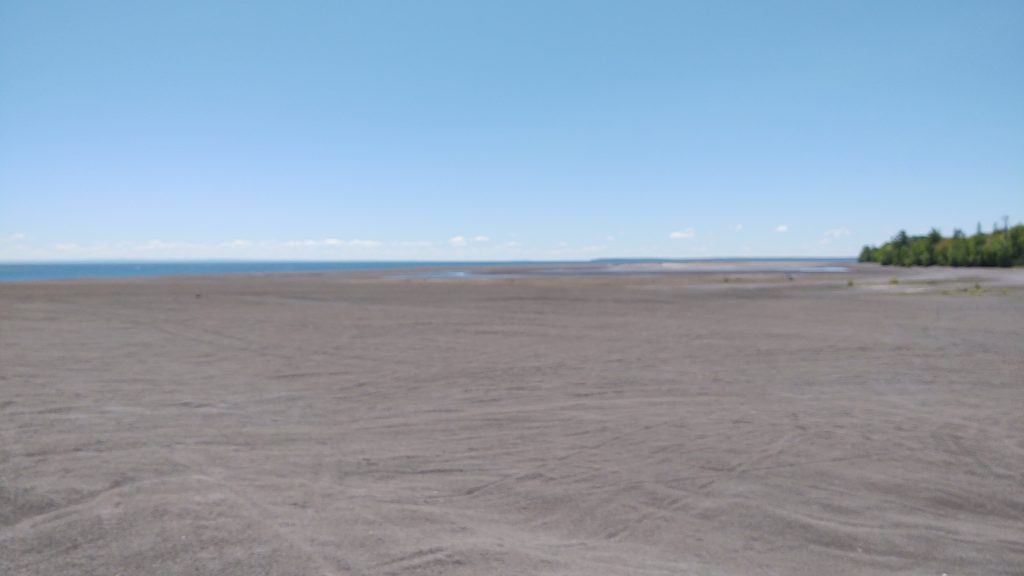
Scientists say that if we were to load all this sand into railcars,
the train would stretch all the way to California.
This coarse vista stretched southward as far as we could see. The village of Gay, named for a founder, Joseph E. Gay, is located on the east side of the Keweenaw peninsula, jutting out into Lake Superior. This area had been home to copper mining from the mid 1800’s to the 1960’s.
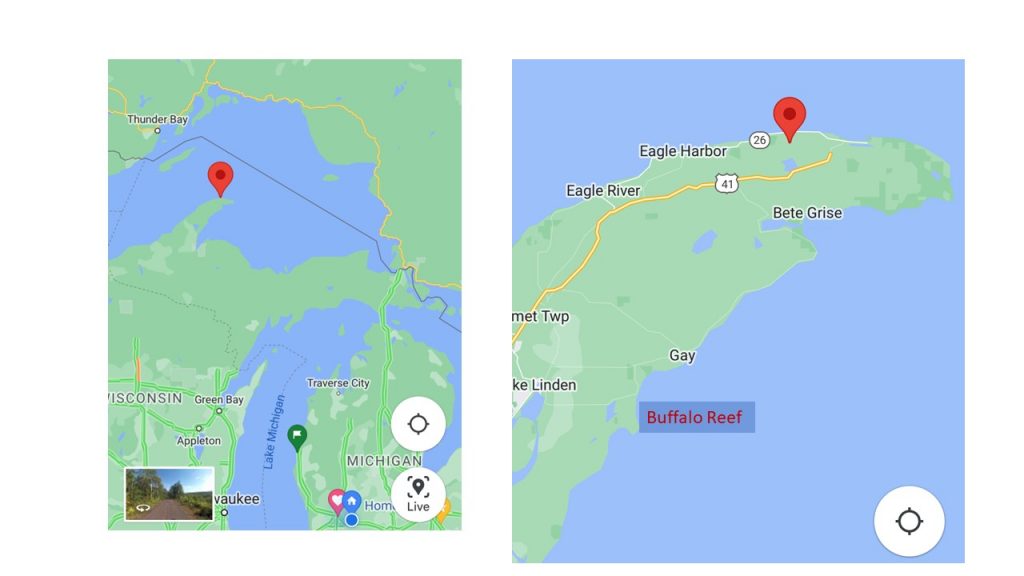
(Left) The Keweenaw peninsula of Michigan
(Right) Gay is located on the eastern side of the land, just north of Buffalo Reef.
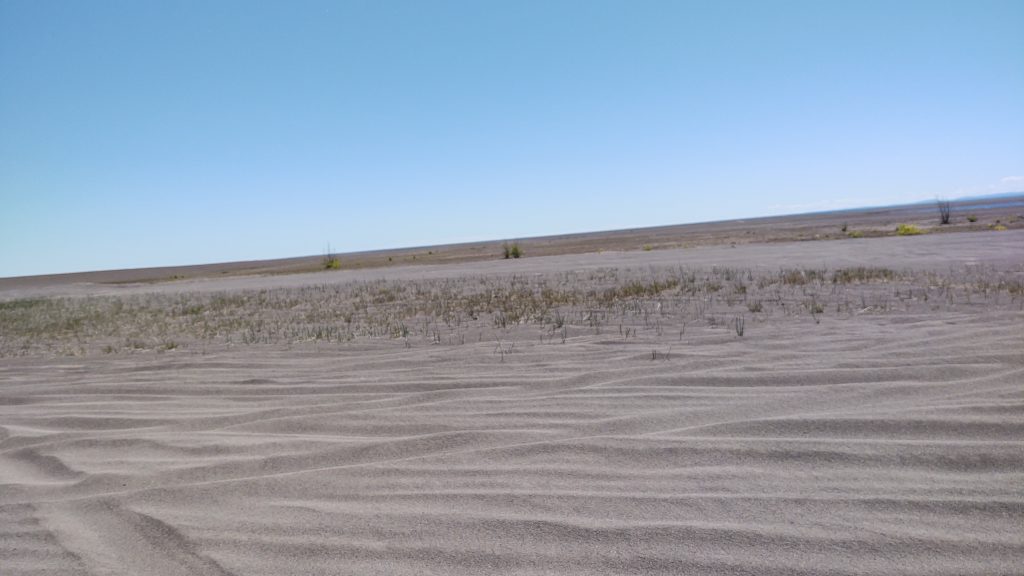
Even though the Gay, Michigan mine ceased operation in 1932, toxic sediment still covers 1,400 acres of shoreline and lake bottom.
Where Did ALL This Sand Come From? The Stamping Process
The mined ore would be carted to a stamping mill located along a shoreline. The boulders containing ore would be “stamped,” (crushed) by a large iron anvil-type tool. (see below)
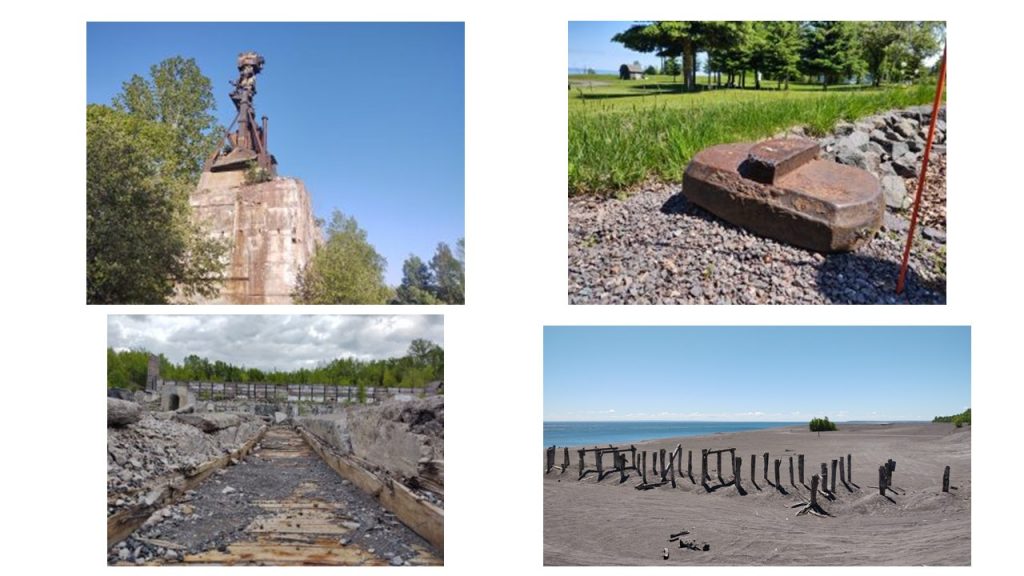
The Freda Stamping Mill illustrates the process of crushing ore. (Top and Bottom Left)
Gay Sands (Bottom Right)
Copper was heavier than the rock and would easily separate. The remaining crushed tailings would be sent down a sluice and dumped into a body of water.
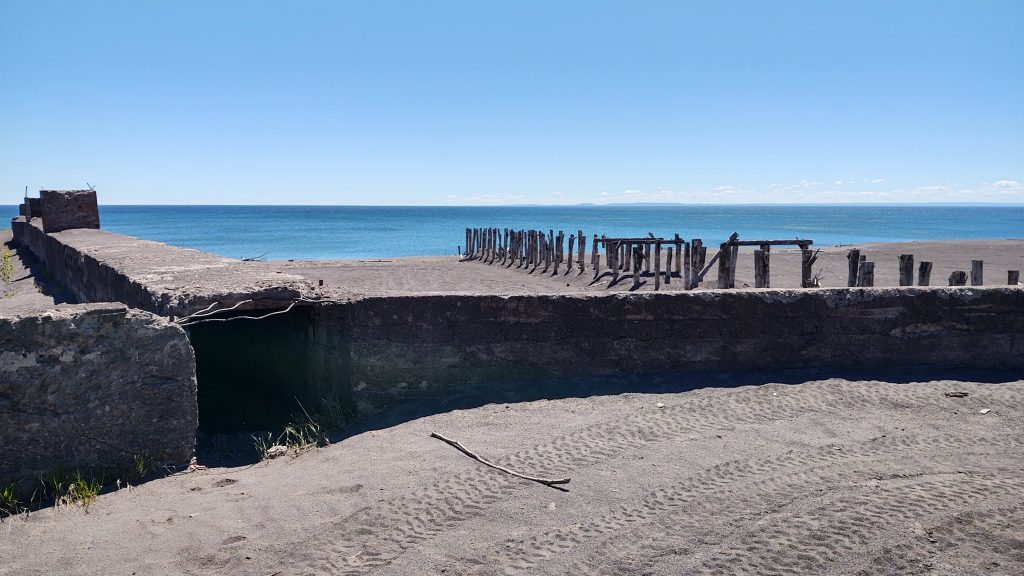
Tire marks tread over the vista at the remains of Gay, Michigan’s mining sluice.
Gay Stamping Mill
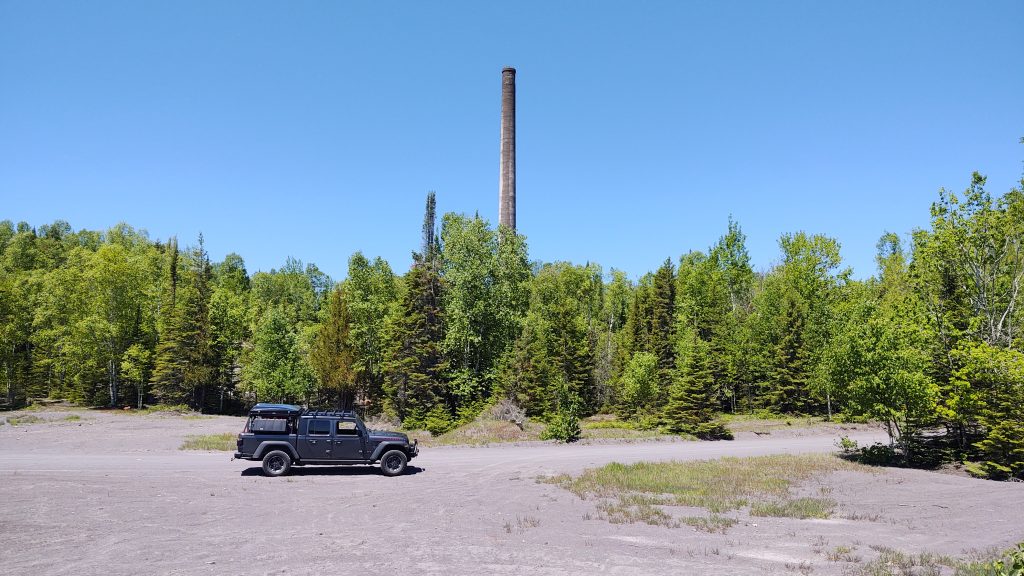
The lone smoke stack stood quietly among the trees which had overtaken the stamping mill.
Chuck and I wanted to investigate the mill. As we neared the wooded area, bugs flagged a signal to their cohorts and swarmed upon me. I raced back to the Jeep to retrieve my “bug shirt” as Chuck climbed through the ruins.
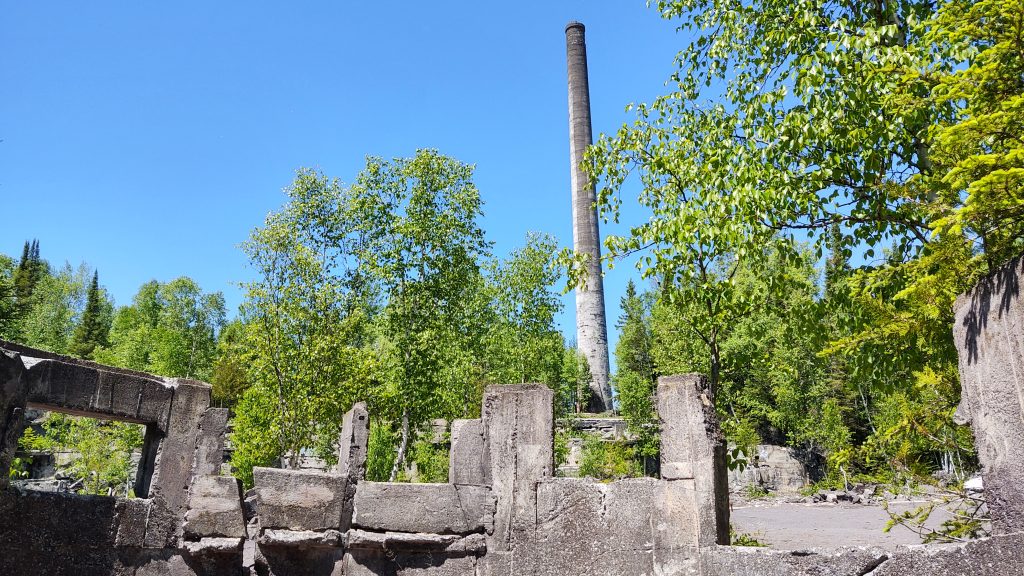
Built in 1901 the mill has been crumbling since it’s closure in 1932.
The Clean Up Process
Allison Lippert’s article (August of 2019) highlighted the dredging of Gay Sands near Buffalo Reef. “This spawning area for Lake Trout and Whitefish stretches 2,200 acres and is vital to the ecosystem as well as our economy.”
One third of all Great Lake’s Lake Trout spawn at Buffalo Reef. “The Great Lakes Indian Fish and Wildlife Commission (GLIFWC) estimates the reef brings about $1.7 million annually in economic benefit to the entire Keweenaw region.”
“The consensus right now from all the biologists involved is, ‘yes’ — based on the telemetry data we’ve seen today – the reef is still viable and worth saving,” Steve Check, project manager with the U.S. Army Corps of Engineers, Detroit District. This will require a lot of dredging. “This project is going to take a lot of Congressional horsepower,” said Steve Check, “It is not going to be cheap to clean this up.”
According to these experts, Buffalo Reef is seriously damaged, but is worth saving. “If we did nothing, the stamp sands would fill in and we’d have significant flooding.” said Check
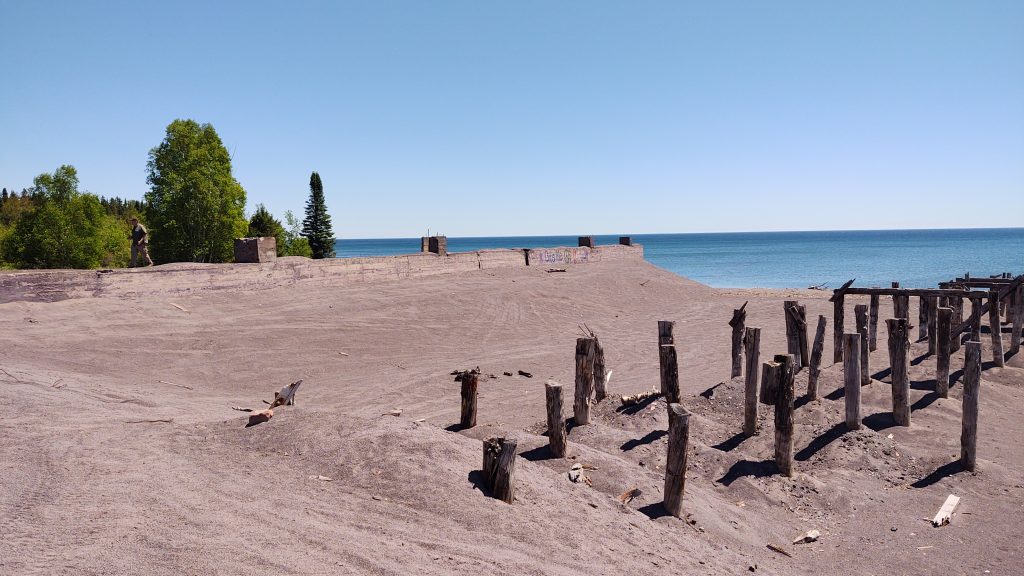
The clean up involves dredging, dumping the sands back into the old mine shafts, building a new reef and shipping some stamp sand to be used as aggregate material.
The Environmental Protection Agency (EPA) has already paid $3.7 million to clean up the metallic sands in the area. Since 2010 more than 4,700 projects have been started in and around the Great Lakes in an attempt to restore the habitats.
“It’s less than a stealth bomber, but still a lot of money,” said Jay Parent, a district supervisor with the Michigan Department of Environment, Great Lakes and Energy (EGLE).
Buffalo Reef Task Force – Current Status
On July 12, 2022 The Buffalo Reef Task Force met at Linden-Hubbell high school to openly discuss findings, discuss progress and the thirteen strategies for clearing the stamp sands. The article I found was from the Department of Natural Resources.

After debates and discussions of the thirteen strategies, they were narrowed down to the following three.
- Build a retaining wall to keep the material in its original location. Dredged deposits could be contained in this area as well.
- Build a landfill where sands could be dumped. This would be in an elevated area near Gay.
- White Pine Mine tailing basins and shafts in Ontonagon County could be filled with sands removed from the lake and beach.
Jim Parent, the district supervisor for the Michigan Department of Great Lakes, Environment and Energy’s Upper Peninsula District Office in Marquette, said, “Though our plan has been selected, we still need to identify a nonfederal sponsor and funding source(s) before we can move ahead with implementing our strategy. The scope of our plan may also change as the project matures.”
The next step would be securing funding and sponsorships. After that, scientists and engineers would design layouts and start executing these plans.
Drivable Beach
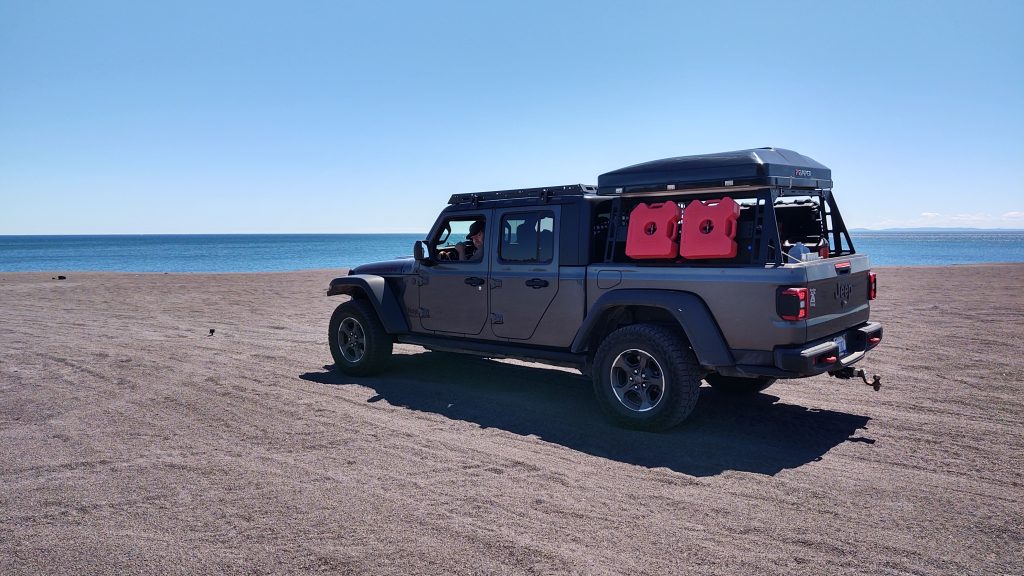
Gay, Michigan is known for this drivable beach. The course sand makes for a perfect off-road experience. However, knowing that this left over mining waste is an ecological issue gives me a new perspective. This situation reminds me to take a critical look at regions, history and even people’s opinions. Continuing to look behind the curtain of life and figure out a way to leave this world a better, safer place than when I had arrived on the planet over half a century ago.
Chuck and Martha Hayden, aka The Viking and Poppins, enjoy going on adventures off the beaten path. They also like to share their explorations with others. The Viking is a retired expedition leader while Poppins is a retired teacher. The two offer independent views of their journeys showcasing places, people, and cultures as they explore the world. Visit and follow them on their website and social media accounts. Website | Facebook | Instagram |YouTube


Leave a Reply